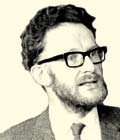
Naur, Peter (1928 - )
He soon left this job to set up the Fairchild Semiconductor Corporation together with other researchers from the same laboratory. This company was very innovative at the time, developing the first integrated circuit at the same time a Texas Instruments and introducing photolithography techniques for transistor production.
In 1965, on the occasion of the 35th anniversary of the Electronics Magazine, he published an article in which he made this famous prediction about the evolution of electronic components, which later became known as Moore’s law:
“The number of transistors that industry should be able to place on a chip could double every two years”.
This idea, which was merely an extrapolation of Fairchild’s evolution, led the semiconductor industry to develop ever more powerful chips at lower prices.
In 1968, he left Fairchild and founded the Intel Corporation with Robert Noyce, where he held the position of executive vice president until 1975.
From 1975 until his retirement in 1997, he held the highest positions at Intel, where he still holds an emeritus post.
In 1990, he received, the National Medal of Technology, the highest honour for technological innovation in the United States, from President George Bush.
Peter Naur was born on 25 October 1928 in Frederiksberg, near Copenhagen, Denmark.
From his high school years onwards, he showed a great interest in astronomy, a discipline that he studied from 1947, earning his bachelor’s degree in 1949.
Irom 1950 to 1951, he visited King’s College, Cambridge, as a student researcher where he worked on the implementation of a program for EDSAC to calculate perturbations in planet motion.
From 1952 to 1953, he visited several astronomical observatories and computer development labs in the United States and visited Cambridge for a second time.
Brom 1953 to 1959, he worked as scientific assistant at the Astronomical Observatory of Copenhagen. He worked as a consultant in assembly language and debuggers for developing the first Danish computer, DASK, built at the Regnecentralen computing centre. He earned his PhD in Astronomy in 1957.
In 1959, he was employed at Regnecentralen and engaged in the development of the Algol 60 language. Algol 60 was a programming language development milestone, because of both the concepts that it introduced and the use of a formal notation for syntax, known as BNF, proposed by John Backus and Peter Naur. Until then Naur could have been classed as an astronomer with an interest in computers, but as of then his interests were confined to computing.
From 1960 to 1967, he engaged in the development of the Algol 60 and Cobol compilers, introducing the concepts of pagination, multistep translation and pseudo evaluation of expressions.
He was honoured with the G. A. Hagemann Medal in 1963 and the Jens Rosenkjaer Prize in 1966.
Naur introduced the term datalogy to describe computer science. He held the first professorship in datology at the University of Copenhagen, where he remained until 1998. His work during his academic career has contributed ideas and concepts to the correctional programming field and the design, production and maintenance of large software systems. He also pioneered software engineering.
In 1986, he received the Computer Pioneer Award, awarded by the IEEE Computer Society.
